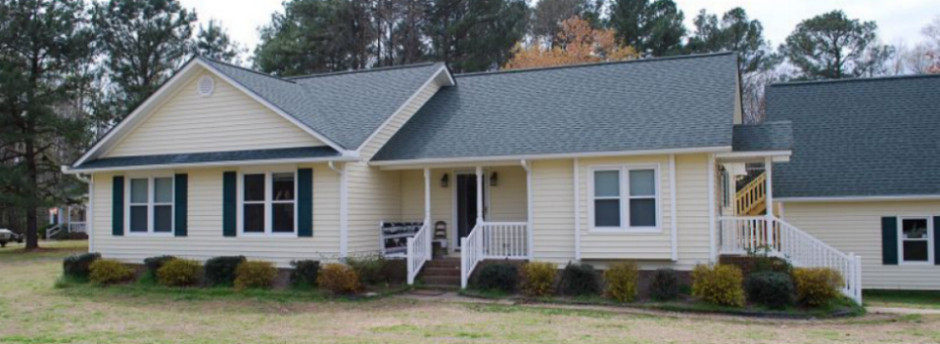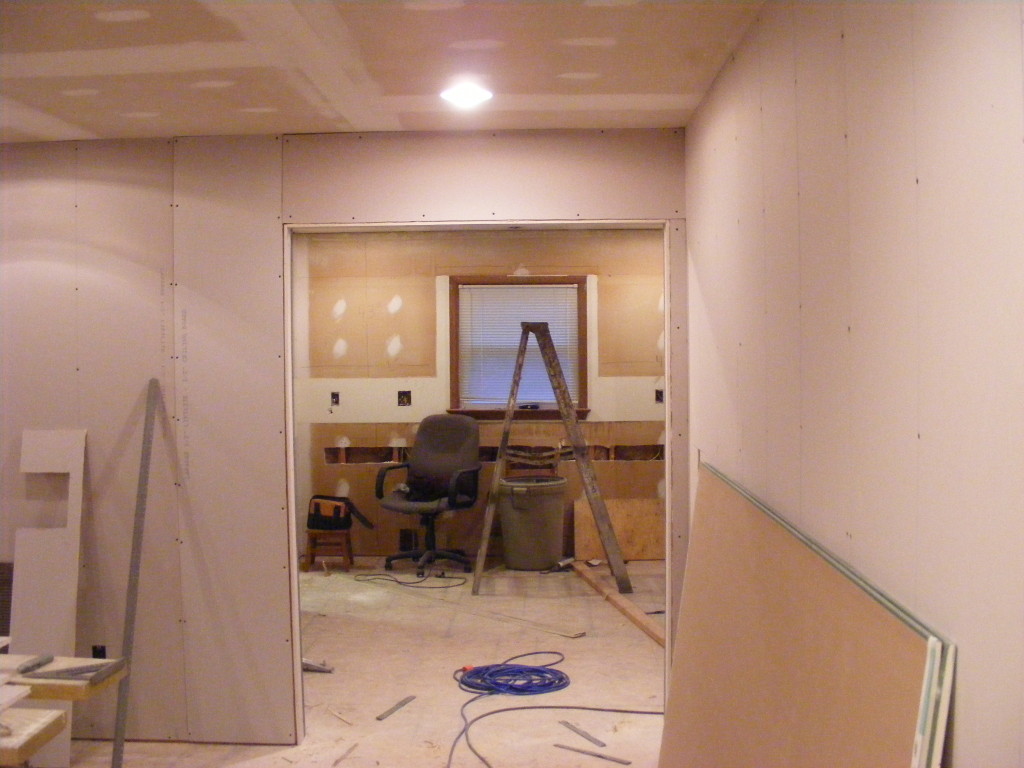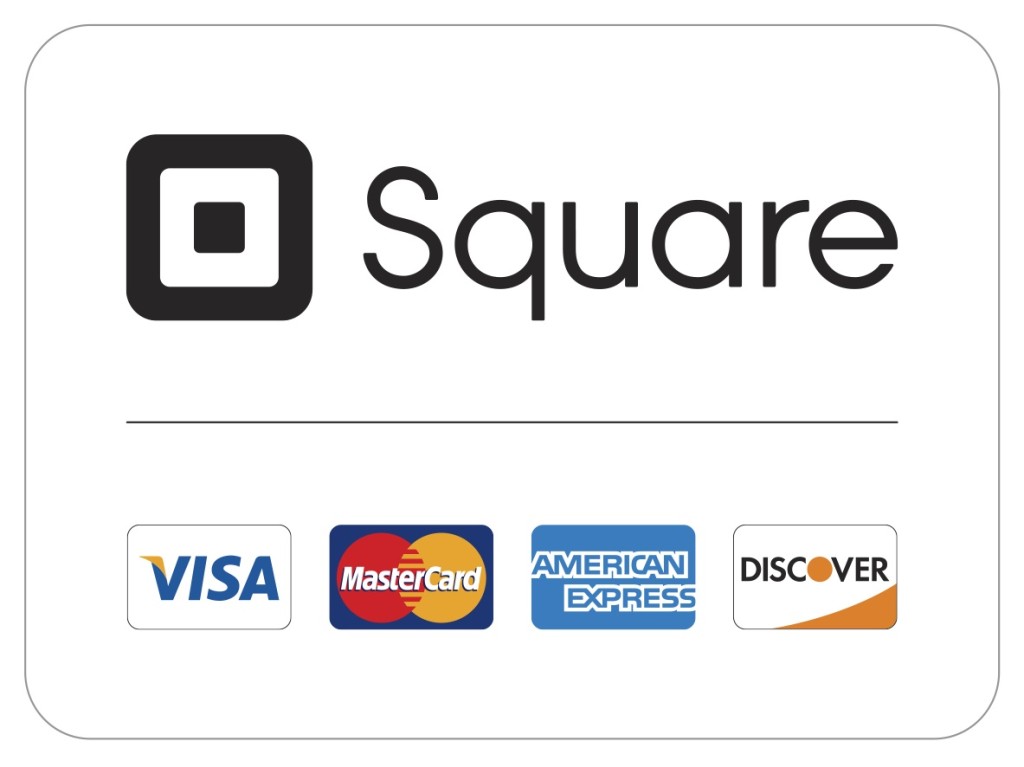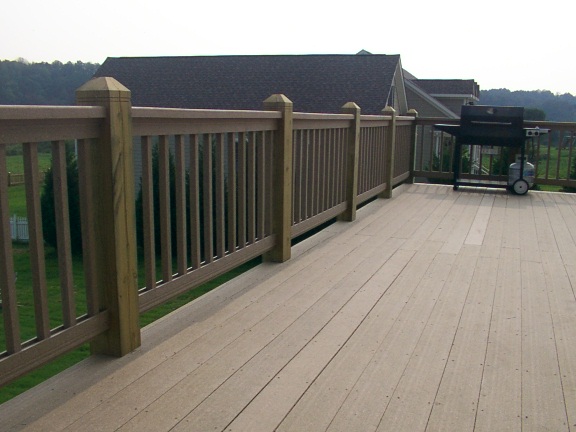Drywall
Drywall – Also known as Sheetrock, gypsum board and wall board is a common building material used for covering the framing of interior walls and ceilings. Modern drywall evolved as a faster and easier method of finishing interior walls and ceilings than lath and plaster, the use of which declined sharply in the 1950s. Drywall panels consist of a gypsum plaster core between two thick sheets of paper and are manufactured in 48″ inch wide by 96 inch, 120 inch and 144 inch lengths with thicknesses ranging from 1/4 inch to 3/4 inch, in quarter inch increments. The longer sides of each panel are beveled which creates a thinned down area at the seams where the panels join. The thinned area facilitates a flatter wall when the drywall is finished.
Drywall panels are secured to the wall or ceiling framing with glue, nails or screws, with the later two driven to a depth just below the panel face. Once installed the panels must be finished to achieve a smooth surface ready to accept paint or wall paper. Finishing is accomplished by spreading joint compound over the seams where the panels meet. Paper or fiberglass mesh tape is embedded in the joint compound while it is still pliable; once dried, the tape helps eliminate cracks in the finished joint from thermal movement or minor structural settling. Joint compound is also applied over the recessed nails or screws and any other defects in the surface of the panels. After the joint compound has completely dried, it is sanded smooth. The process of applying and sanding the joint compound is repeated until all blemishes are eliminated, rendering the drywall ready for paint or wall paper.
In addition to general purpose use, drywall is manufactured with moisture resistant properties for use in areas of high humidity and additional fire resistant properties for use in areas where controlling the spread of fire is critical.




